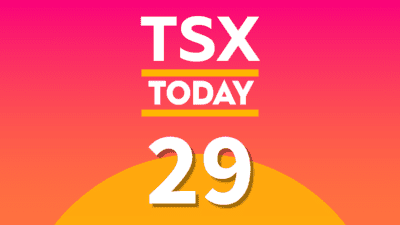Brookfield Infrastructure Partners L.P. (TSX:BIP.UN)(NYSE:BIP) may be one of the most overlooked opportunities on the TSX. Over the past eight years, Brookfield has grown its funds from operations at an incredible compound annual growth rate of 23% including M&A, and 12% without M&A.
Brookfield managed this while maintaining a dividend yield of about 6%, a beta of 0.38 (which means the stock is significantly less volatile than the overall market), and seven consecutive years of dividend growth (out of nine years in business) at a compound annual growth rate of 12%.
For Brookfield, however, the opportunity lies in the future, not in the past. The company is targeting impressive long-term annual funds-from-operations growth of 6-9% annually, and this growth rate does not include the effects of M&A opportunities. This is extremely low-risk growth, and the market is currently pricing in significantly less than that.
Brookfield has significant growth opportunities
Brookfield, being an owner and operator of infrastructure assets, invests in “real assets,” or things like natural gas pipelines, ports, railroads, toll roads, and various types of communication infrastructure. These are assets with very stable, long-life cash flows. Thanks to Brookfield’s geographic diversification (the company operates globally with a focus on South America, Australia, and Europe) Brookfield has a once in a lifetime opportunity to deploy massive amounts of capital at high rates of return.
This is because there is a massive global need for infrastructure investment. Emerging economies are investing heavily in infrastructure, and developed economies have been under investing, which will lead to higher rates going forward. Constrained public finances, however, means that there is a large demand for private capital.
Brookfield is currently very active in troubled markets such as Brazil, where there is big demand for infrastructure investments, but due to a lack of capital, an economic crisis, and scandals among domestic construction companies, Brookfield is in a unique position where it is, in many cases, the only buyer. This allows Brookfield to purchase assets at a discount.
Brookfield recently stated that in Brazil, there are more opportunities than it can handle, and with almost no competition from domestic competitors in asset sales, Brookfield’s main competition is largely foreign players, of which there are very few. Many of these players are just opening up offices and hiring in Brazil now, which gives Brookfield a major edge since it is an established player and will therefore likely win in many asset sales.
Brazil is currently in the middle of a massive $64 billion infrastructure program as the government plans to sell rights to various infrastructure assets. As the Brazilian economy recovers, Brookfield will profit tremendously.
Opportunities in Brazil and other countries will give Brookfield plenty of opportunities to deploy capital into low-risk assets, but it is important to note that the bulk of Brookfield’s expected 6-9% funds-from-operations growth going forward does not even depend on investment.
And 3-4% of the 6-9% growth comes from inflationary price increases that are built into Brookfield’s long-term contracts; 1-2% comes from GDP growth in the underlying economies that Brookfield operates in, which allows Brookfield to use the spare capacity it has in its port and toll-road businesses. The remainder of the growth comes from Brookfield re-investing its own cash flows.
Brookfield is currently 30-40% undervalued
Brookfield stated recently that infrastructure assets are worth 30-40% more on the private market than the public equity market due to the fact that institutional investors are actively seeking infrastructure assets (due to their low risk) and returns that meet the typical return requirements for institutional infrastructure investors of 6-10%.
Public markets, however, are currently in a period of risk aversion, although this is changing. The result is that there is a big disconnect between what low-risk returns of 6-9% are being valued at in the private market versus in the public market, and Brookfield sees this gap closing as sentiment improves in the public markets.









